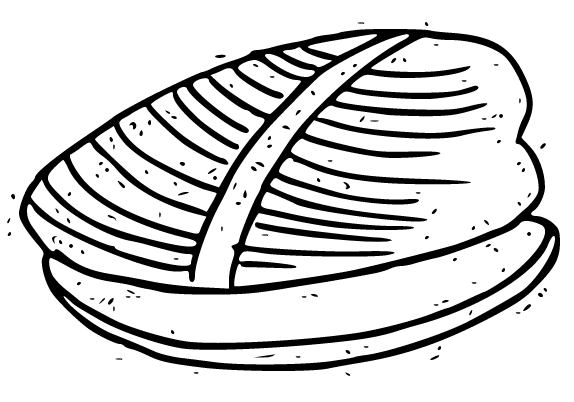-

-
The Discerning Mollusk's Guide to Arts & Ideas
-


In November of 1965, I and four others activists burned our draft cards in Union Square, earning us six month prison sentences. (Mine was served years later, in 1972, at Danbury and Allenwood penitentiaries.) Over that winter I occupied a bed in a dorm room managed by the Catholic Worker, the anarchist-pacifist movement founded by Dorothy Day in the 1930s. My roommates were all draft resisters and militant pacifists. One of them, Roger LaPorte, would later immolate himself on the steps of the federal courthouse in Foley Square in protest against the war.
Between bouts of demonstrating, planning, and direct action I also helped out in the newspaper office of the Worker on the 3rd floor of the St. Joseph’s House, then located at 175 Chrystie Street near the Bowery. I worked in a volunteer capacity. Besides myself the office held two regular staff persons: the painter Walter Kerrell, and Smokey. This account is about him.
Smokey was one of the legendary characters of the old Catholic Worker. He’d never been known under any other name. One might have described him as an alcoholic in semi-stable remission: from time to time he went on binges. By virtue of his many years of service to the Worker a dispensation had been granted whereby he, and he alone, was given the money to buy himself a six-pack of beer every Friday night. Only Dorothy Day herself had been at the Worker longer.
Smokey’s life-long residence on the Bowery (New York City’s Skid Row on the Lower East Side) went back four decades. With the enactment of Prohibition all the legitimate bars were closed and the derelicts were too poor to afford the speak-easies. This seems not to have affected the economic health of the Bowery, which was even more robust then than it is today. Apart from the historical fact that Prohibition never succeeded in reducing the amount of drinking, the Depression also increased the numbers of desperate people out of work.
“They sold us this shellac!” The standard confection, one to which Smokey gave his stamp of approval, was a mixture of Coca-Cola with shellac bought at a paint store. Sometimes denatured rubbing alcohol was used. One could get a bottle of shellac then for 15 cents.
“They made out like they didn’t know what we was gonna’ use it for! No sir! We just told’em we was paint’n th’floors! What th’hell—they didn’t know the difference. So we was paint’n th’floors? They didn’t care none.”
When Smokey held court it was in a loud voice accompanied by arm-waving and dramatic gestures:
“We drank the stuff everywhere! In them days the 3rd Avenue Elevated was still standin’. We drunk it in the street; under the El; up on the platforms! They was the best places. If it was’a warm day, we’d be sitt’n or lie’n aroun’ up there, from early in th’ mornin’ until it gets dark. In them days people got off at the Bowery at their own risk! It was okay, if you didn’t mind stepp’n over bodies. Why, we was heaped up there higher’n a sinkful of dishes! If you was to ask me how I lived through it, ‘till this day I can’t tell you.
“But you take that Sneaky Pete stuff they’re drinkin’ nowadays. That’s wors’n anything! Nah . . . I would’n touch’a stuff! That Sneaky Pete drives a man crazy! And it ain’t nothin’ but cheap wine! That’s all it is! You know that guy, crazy Mike, who’s always comin’in here makin’ trouble? He got that way drinkin’ that Sneaky Pete stuff! I won’t touch it. I wouldn’t touch it if you give me all’uh money in the world! I wouldn’t touch a drop of it! No sir!”
The pickled eyes in Smokey’s much pleated and furrowed face glared at us over his thick horn-rimmed frames. He paused to take another long drag on the endlessly renewable cigarette that had earned him his nick-name, before continuing:
“Durin’ th’Depression they turned some’a th’bars intuh soup kitchens. I used t’work at the one down’on’a corner, dishin’ out soup. Later they sends me to Hart’s Island. That’s where they used to send us. They put us to work there, diggin’ holes! Big ones, to drop corpses in. Yessir: even children! Kids! One day we carries 80 corpses up there, drops’em innuh holes, and covers’em over with dirt.”
Walter Kerrell, who was in the office at the time, explained: “That’s the Potter’s Field. Dorothy wants to be buried there.”
“Later they sends us back again to the Bowery, no better’n we was before. Them days you got all kindsah people on the Bowery, young and old. Yep: lots of’em inn’er twenties! Lots of the folks you see on the Bowery got families. They comes down here to escape the disgrace. Here you drinks as much’s you like, and nobody gives a damn. Nobody knows who you is! They comes down here’t’escape the disgrace. They comes down here to drink themselves t’death!”
Smokey was in his 60s. The Bowery had prematurely aged him, the facial skin dry and taut on his skull like the membrane of a drum.
Though short and bony and clearly in poor health, he somehow appeared tough. Most of his teeth had fallen out; those remaining were charcoal black from accumulated nicotine. I never saw him without a lit cigarette in his mouth. Smokey had been laid up in the hospital shortly before I arrived. The first thing he said to Dorothy Day when she came to visit him was:
“Dorothy; has you got my coffin nails?”
She wouldn’t have dreamed of coming without a carton. Casual visitors to the St. Joseph’s House were well advised to bring a pack in case they ran into Smokey. The brand didn’t seem to matter. And no one ever walked into the newspaper office without being cadged by him for ‘coffin nails’. One reason for this was that he wasn’t allowed much pocket money. What he earned through his office work was put aside in a fund for necessities. Even after 2 decades off the streets he was still liable to go on a drunk that ended only when he’d completely passed out. Walter Kerrell told me the following story:
Sometime in the early ‘50s Smokey slipped on the pavement in front of the St. Joseph’s House and broke his leg. Despite whatever loyalty he may have felt for the organization that had rescued him from the streets, he sued the Worker. The judge ruled in his favor and he was awarded something like $10,000: a non-trivial sum even today. Although everyone knew it would go to drink, the CW had to pay up.
Over the next year Smokey did not step three times into the St. Joseph’s House. Personnel and residents from the Worker would come across him lying against the buildings lining the Bowery, in the narrow alleyways and side streets, or under the tables of the local bars, out like a light. It took him a year to run through the award money. The CW picked up the pieces and eventually he was reinstated at his job in the newspaper office.
Smokey had even made the front page of the New York Times. Some years before he’d gotten a job washing dishes at an exclusive country club out on Long Island. While closing down the kitchen one weekend, someone accidentally locked him into the pantry. The following Monday morning his body was discovered, unconscious, in the liquor closet. Over this “lost weekend” he’d consumed the club’s entire supply of Scotch! An ambulance took him to Bellevue Hospital. Walter couldn’t recall if Smokey was rehired by the club.
To listen to him talk no one at the CW took more pride in their work than Smokey. Visitors to the newspaper office were given the impression that he was in charge of everything. The truth of the matter was that Walter Kerrell had been managing the office for many years. A few years later, however, Walter retired from the Worker and went out of his way to avoid it. The organization aroused fierce loyalty and fierce antagonism, sometimes in the same person. I think Smokey had died by that time.
Smokey’s job consisted of entering new subscribers into a ledger and sending them the first issue. The CW newspaper is famous for its subscription policies: 1¢ an issue if you can afford it. Once you get onto the mailing list you are there for life, sometimes even beyond. I commonly saw newspapers returned that had been sent out to persons who’d died years before.
My job was to work the stencil-maker, a typewriter that manufactured the waxed-paper stencils that imprinted the addresses of subscribers to the CW newspaper onto slips of brown paper. These were wrapped around the copies folded and sent out by the team of recovering, (and sometimes not-so-recovering) alcoholics working on the second floor. It was also part of my job to remove stencils of deceased subscribers from the files.
One morning I arrived and found that Walter had placed a sign on the stencil-maker with Do Not Use written on it. The table and surrounding floor were buried in chunks of plaster both large and small, broken off as a mass from the ceiling not half an hour before. Had I been sitting there at the time I could have suffered a serious injury. Over the next month about forty pounds of plaster dropped from the ceiling into the room. Whenever it rained water poured down from three places. City health and fire inspectors who harass and sometimes close down anarchist operations are not always motivated by political malice. Fortunately the roof was fixed before the fire inspector made his yearly visit in April.
One Friday night a number of us were sitting with Smokey on the steps of his apartment on Kenmare Street, keeping him company as he drank his weekly six-pack. Apropos of nothing, he said:
“You know that work I do in the office? Any 6-year old could do that!”
He paused, staring bitterly at the pavement, his mask down, willing to confess to persons he knew and trusted what he would admit to no one else, the deep conviction that his life had been largely wasted:
“Any 6-year old could do that work.”

Roy Lisker (1938–2019) was a writer, artist, mathematician, journalist and political activist. He was the author of a vast amount of literature in every imaginable form, which he largely self-distributed to friends and subscribers to his newsletter, Ferment. His conventionally published work includes In Memoriam Einstein (Sagging Meniscus, 2016) and Lincoln Center in July (Sagging Meniscus, 2016).